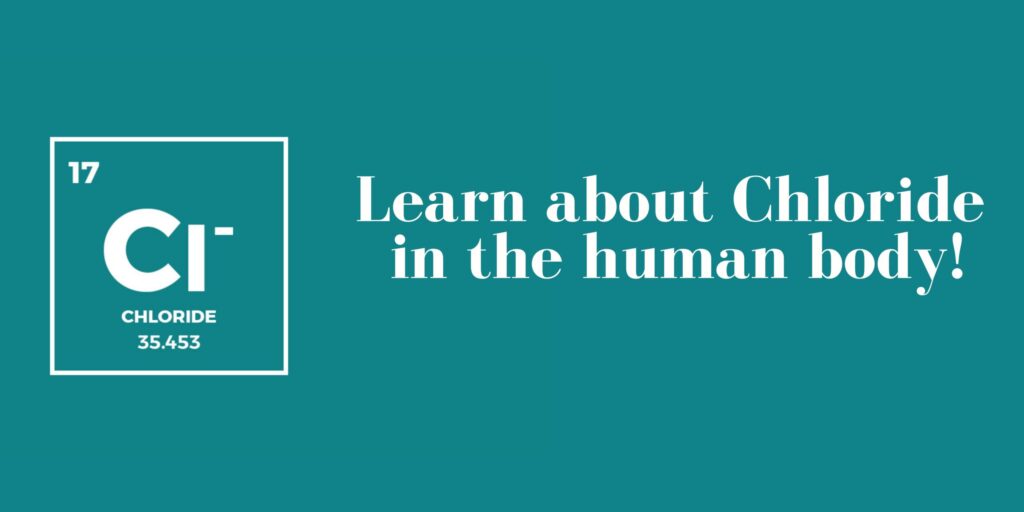Contribution of chloride
The contribution of chloride to the human body is discussed in detail in this article. Chloride is one of the essential minerals our bodies need in large amounts to stay healthy. Chloride can be found naturally in several foods, but table salt, or sodium chloride, is the most common form.
Even though chloride and chlorine sound alike, they are not identical. Chloride is a mineral that the body needs for many things, while chlorine is mainly utilised to clean swimming pools. A lot of things in our bodies depend on chloride. Chloride, like sodium and potassium, makes streams in the membranes of our cells that help them do different vital jobs.
How much chloride you require each day depends on your age, gender, and stage of life. The dietary reference value (DRV) for normal adults over 18 is about 3 g of chloride per day. This is true during pregnancy and breastfeeding as well.
Like the DRV for sodium, the DRV for chloride is safe enough to meet our bodies’ needs. This means it keeps us from having a higher risk of health problems like high blood pressure and heart disease connected to foods high in sodium chloride.
Foods rich in chloride
Controlling the amount of water is encompassed in the contribution of chloride to the human body. For instance, chloride channels are very crucial for regulating how much water and what kinds of chemicals and nutrients go into and out of cells. On the whole, they are significant for maintaining the fluids in our bodies in balance, which helps keep our blood pressure and pH in check.
Chloride is generally found in tiny quantities in foods that haven’t been processed. For instance, raw and unprocessed meat and fish can have up to 4 mg of chloride per gramme. In comparison, fruits and vegetables typically have less than 1 mg of chloride per gramme of food.
Yet, most of the chloride we eat daily comes from table salt or food additives added to foods while they are being cooked or processed. Examples of foods high in chloride are canned fish, cheese, processed meats and food sauces.
An important point to remember
It’s essential to remember that these foods must be eaten in small amounts and ideally in versions with little or no added salt (less than 0.3 g of salt per 100 g of food). Also, it’s necessary to be careful about how much table salt we add to food when we cook. Remember that 5 grammes of table salt (one teaspoon) is adequate to fulfil our daily chloride needs and sodium.
Providing oxygen and absorbing carbon dioxide is included in the contribution of chloride to the human body. Chloride is also crucial because it helps the heart and muscles contract and helps nerve cells transmit information from the brain to the rest of the body. More notably, this mineral is required to help red blood cells take in oxygen and release carbon dioxide in the lungs and other areas of the body.
Chloride works with potassium and sodium to help control how much water is in the body and keep our muscles and nerve cells working well. To keep our blood pressure balanced, we need the right amount of these three minerals in our diets. In particular, we must ensure we receive adequate potassium and maintain our salt consumption within the recommended ranges.
Chloride disorders
We usually get enough chloride in our diets because this mineral is found in most foods. Chloride deficiency usually happens when our bodies get rid of too much of this mineral. This can occur when we have certain metabolic disorders or health problems, like severe phases of diarrhoea or kidney problems.
Helping digestion is entailed in the contribution of chloride to the human body. Chloride also helps the stomach make and release hydrochloric acid (HCl), which is needed to break down and absorb food. Without HCl, food would not be adequately broken down and absorbed.
The maximum amount of chloride you should take each day is 3.1 g, which is about the same as a teaspoon of table salt. But it’s important to remember that table salt is frequently added to processed foods, so it’s easy to eat more than the prescribed amount. If we regularly exceed this limit, we run the risk of high blood pressure, which could result in other health problems like heart disease and kidney disease.



